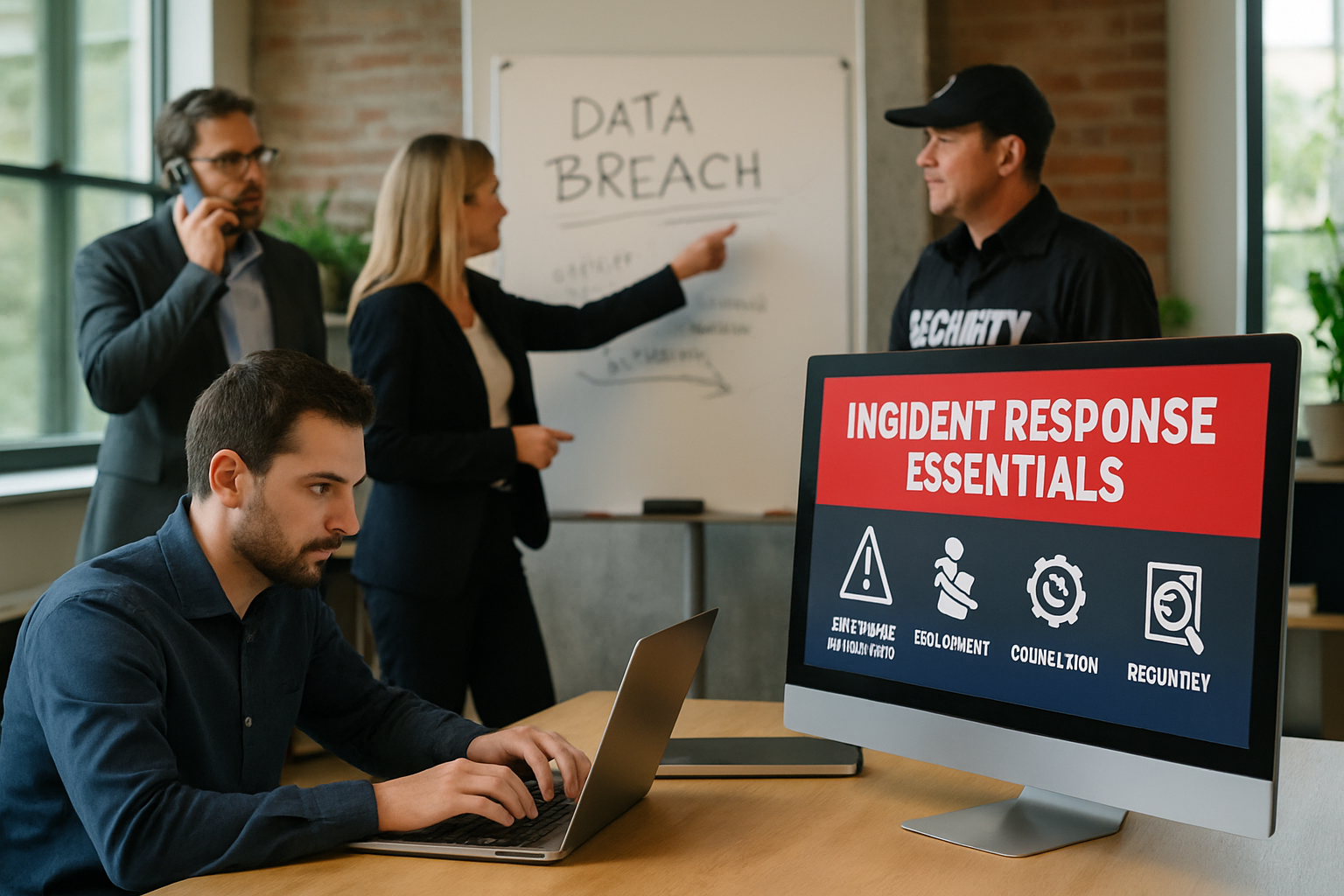
Incident response essentials
In today’s connected world, organizations face an ever-present risk of cyber incidents. Whether caused by human error, technical malfunction, or malicious attack, these events can threaten data integrity, business continuity, and even personal privacy. Understanding the essentials of incident response is not just a technical requirement—it is a vital skill for everyone involved in maintaining a safe and ethical digital environment.
Why Incident Response Matters
Incident response is the structured approach organizations take to manage and mitigate the fallout from security breaches or technological disruptions. It is not a luxury reserved for large enterprises with dedicated security teams. In fact, educational institutions, startups, nonprofits, and companies of every size can be targets of cyber incidents. The stakes are particularly high for organizations fostering inclusion in technology—such as those supporting women in tech or neurodivergent learners—where trust is foundational.
“A well-prepared incident response plan is not simply a technical safeguard. It is a statement of care for your users, your team, and your mission.”
To build this foundation of care, it’s essential to understand the basic steps in the incident response process. Each step is an opportunity to demonstrate competence, empathy, and resilience.
Step 1: Preparation—Laying the Groundwork
No organization can eliminate all risks. But preparation can significantly reduce the impact of incidents. This step involves more than drafting a generic plan or installing security tools. Preparation is about building a culture of security awareness and readiness at every level.
Key preparation activities include:
- Developing a detailed incident response plan—outlining roles, responsibilities, and step-by-step procedures for a wide array of possible scenarios.
- Training staff, including non-technical employees, on how to recognize and report suspicious activity.
- Setting up communication protocols to ensure rapid, clear messaging during an incident.
- Testing systems and backups regularly, not just for functionality but for resilience to disruption.
For organizations supporting neurodivergent individuals or those new to technology, inclusive training materials and accessible communication channels are critical. Preparation is where you set the tone for how your team will respond—calmly, confidently, and inclusively.
Building an Inclusive Incident Response Team
Incident response is a team sport. Diverse perspectives—across gender, background, and cognitive style—bring creative solutions to complex problems. Ensure your team includes voices from different departments and experiences. This not only improves response efficacy but also fosters a sense of belonging and shared mission.
Step 2: Identification—Knowing When Something Is Wrong
Detection is the heartbeat of incident response. Early and accurate identification can mean the difference between a minor disruption and a major crisis. This step involves recognizing signs of trouble: unusual network activity, unexpected system changes, or alerts from monitoring tools.
Empowering Everyone to Be a Sensor
Security should not be the exclusive domain of IT. Everyone in an organization can help identify incidents. Encourage a culture where reporting suspicious activity is celebrated, not stigmatized. Women and neurodivergent staff, who may have different communication styles or perspectives, should feel empowered to raise concerns without fear of dismissal.
“If you see something, say something. It’s not just a slogan—it’s an invitation to participate in a shared defense.”
Technical detection may involve automated tools: intrusion detection systems, antivirus alerts, log analysis. But human intuition and awareness remain invaluable. Train your team to notice the unexpected and to trust their instincts.
Step 3: Containment—Limiting the Damage
Once an incident is identified, the next priority is containment. This step is about preventing the spread of harm—whether it’s stopping a malware infection, isolating a compromised account, or disabling vulnerable systems. The goal is to buy time, preserve evidence, and protect assets while you investigate further.
Effective containment strategies include:
- Network segmentation to prevent lateral movement by attackers.
- Disabling affected accounts or devices to stop ongoing abuse.
- Coordinating with third parties—service providers, law enforcement, or partners—when the incident crosses organizational boundaries.
Containment decisions often need to be made quickly and under pressure. This is where clear roles and prior training pay off. There is no one-size-fits-all solution; the best approach depends on your organization’s size, structure, and mission.
Balancing Speed and Communication
Containment is not just technical. Communicating what is happening—without causing panic or confusion—is equally important. Be transparent with your internal team, and if necessary, with external stakeholders. For inclusive organizations, consider the needs of neurodivergent staff or non-native speakers, using simple language and multiple channels to ensure understanding.
Step 4: Eradication—Removing the Threat
After containment, it’s time to focus on eradication: eliminating the root cause of the incident. This might mean deleting malicious files, patching vulnerabilities, or resetting credentials. The goal is not just to stop the current incident, but to ensure it cannot recur in the same way.
Eradication requires thoroughness. Rushing this step can leave remnants of the threat in your environment. Take the time to:
- Investigate the incident’s origin—How did it start? What systems were affected?
- Apply fixes—Install patches, change configurations, or implement new controls.
- Validate—Double-check that the threat has been fully removed and that systems are safe to restore.
“Restoring trust begins with rigor. Every step in eradication is a step toward safety—for your systems and your community.”
Document your actions and lessons learned. This not only helps in future incidents but also supports transparency and accountability, which are essential values in the technology sector.
Step 5: Recovery—Getting Back to Normal
Once the threat is eradicated, the focus shifts to recovery. This is the process of bringing affected systems and services back online, restoring data from backups, and ensuring business operations can resume safely. Recovery is not simply a technical task; it’s a human one, as well.
For organizations supporting diverse and neurodivergent communities, recovery includes:
- Reassuring users and staff that their data and trust remain priorities.
- Providing clear instructions for any changed processes or new security measures.
- Supporting those affected by the incident, whether through counseling, technical help, or open dialogue.
Monitor systems closely during this phase. Sometimes, attackers leave behind hidden backdoors or attempt to strike again. Vigilance is key, but so is empathy. Recognize the stress incidents can cause and support your team’s well-being throughout the recovery.
Step 6: Lessons Learned—Improving Future Response
The final step—often overlooked but arguably the most important—is to learn from the incident. This is where the cycle of incident response becomes a cycle of improvement. Gather your team, review what happened, and ask tough questions:
- What went well?
- Where did we struggle?
- How can we prepare better for next time?
- Did our communication reach everyone who needed it?
Document these lessons and update your incident response plan. Share insights across your organization, especially with groups who may have felt left out of the response. This process is not about assigning blame, but about building a culture of continuous learning and collective care.
“Every incident is an opportunity for growth. In learning together, we become not just more secure, but more resilient and connected.”
Incident Response and Inclusion: A Modern Imperative
Incident response is not just about technology—it is about people. When we design our plans with empathy, inclusion, and transparency, we build safer spaces for everyone. For women in technology and neurodivergent individuals, incident response can be a platform for leadership, advocacy, and innovation.
Encourage participation in incident response planning from all corners of your organization. Celebrate successes, and be gentle with mistakes—they are inevitable and invaluable. Technology evolves rapidly, but the fundamentals of care, communication, and collaboration remain constant.
The Human Dimension of Incident Response
Remember that behind every alert, every remedial action, and every recovery effort, there are real people—users, colleagues, learners—who rely on you. Approach incident response not just as a technical checklist, but as an act of stewardship. Protecting data, systems, and trust is a deeply human responsibility.
“Technology is built by people, for people. Our response to incidents should reflect that truth at every step.”
Continuing the Journey
Mastering the essentials of incident response is a journey. It is one that calls for technical rigor, creative problem-solving, and above all, compassion. Whether you are a seasoned IT professional, an educator empowering the next generation, or a newcomer exploring the world of technology, your role in incident response matters.
Prepare. Observe. Contain. Eradicate. Recover. Learn. These are not just steps in a plan—they are commitments to your community, your mission, and your shared future in the digital age.


